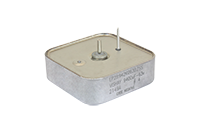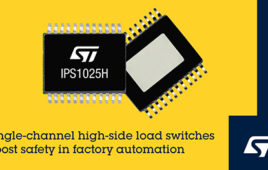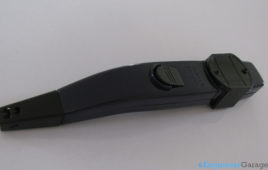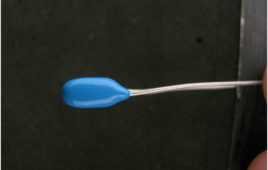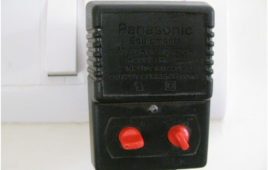Yes. This week’s Insight is a Hand Blender. On the last Saturday morning, after a full night’s work at the EG Labs, the whole Engineering Garage team gathered to make smoothies and sandwiches before retiring to bed at dawn (BTW, the Garage has enough space and equipments to be used as a kitchen, a rest house and a highly charged PS-3 arena during weekends), and one of our team members screwed the Hand Blender open. Thus, the Insight. Hand blenders were first invented by the Swiss and were straightaway recognized as a good time saver: a solution for instant food meshing, mixing, whipping and all the mishy-mashy things they do in kitchen. It is easy to guess that this light weight, a foot tall gadget houses a motor, a PCB and some (optional) accessories that would allow speed control and indicative light options etc. BUT: exactly what kind of motor does a simple blender have? How can it tolerate the forces generated by a motor, its body being made of plastic? Can its motor have different configurations? Let’s find out what the nerds in our team have discovered by reverse engineering a [Phillips HR1350] Hand Blender while sleepwalking.
Kyocera launches new series-connected supercapacitor modules
KYOCERA AVX, a global manufacturer of advanced electronic components, released the new SCM Series double-layer, series-connected electrochemical supercapacitor modules. The new SCM Series series-connected supercapacitor modules can be used by themselves or in conjunction with primary or secondary batteries to extend battery life and backup time or provide instantaneous power pulses in hold-up, energy harvesting,…
Component selection for low power embedded systems
Selecting components is one of the most essential and critical processes when designing any electronic system. Poor component selection can lead to many problems within the design, PCB layout, power budget, etc. In this article, we will discuss how to select a component for a low-power-optimized design. Resistor The power dissipated by a resistor is…
How to design a DC-to-DC buck converter
Most appliances require 5Vs for operation. In this experiment, we’ll design a DC-to-DC buck converter that provides 5Vs of the regulated output. We’ll use an Adjustable AP65111AWU-7 switch-mode IC for the DC voltage conversion and analyze its performance. Specification of the IC: A step-down 12V DC to 0.8V to 6V DC An output current of…
Vishay launches new MLCC series optimized for DC-blocking applications
Vishay Intertechnology has introduced a new series of surface-mount multilayer ceramic chip capacitors (MLCC) optimized for DC-blocking applications. The industry’s first such devices characterized for common frequency bands ranging from 3 MHz to 18 GHz, the Vishay Vitramon DC Blocking Capacitors make it easy for designers to choose the right component for their application. Manufactured in…
Vishay’s new resonant transformer with integrated inductor simplifies PCB layouts
Vishay Intertechnology has introduced a new resonant transformer for inductor-inductor-capacitor (LLC) applications that feature the transformer and an integrated inductor in a single package. Designed to save PCB space while simplifying layouts and reducing component mounting requirements, the 5.5 kW Vishay Custom Magnetics MRTI5R5EZ offers fully tunable magnetizing and leakage inductance with minimal parasitic variation. The…
Vishay’s new wet tantalum capacitor offers industry-high capacitance
To meet the needs of military and avionics applications, Vishay Intertechnology has introduced a new high-energy, wet tantalum capacitor that delivers the industry’s highest capacitance per voltage rating and case size for this device type. Available with radial through-hole terminations with a stud mount option in the B and C case codes, the EP2 can be…
STMicroelectronics introduces new single-channel load switches
STMicroelectronics has released single-channel versions of its programmable high-side switches, the IPS1025H and the IPS1025H-32. With built-in protection for undervoltage, overvoltage, overload, and overtemperature, they enable the intelligent driving of capacitive, resistive, or inductive loads — which draw high startup current. The internally programmed current limit differentiates between the IPS1025H and IPS1025H-32. The IPS1025H limit is 2.5A and it…
Operating Daily Life Gadgets using Voice Recognition System and Embedded Controllers
Introduction 1.1 GENERAL This chapter deals with the objective and unique features of the project and the organisation of the report. 1.2 OBJECTIVE The objective of the project work is to build an aid for physically challenged people to enable them operate normal daily life gadgets easily and conveniently using a voice recognition…
Insight – How Electronic Gas Lighter works
Every big fire starts as a little spark.“Spark”, has been the first step of mankind towards progress and prosperity. Spark from the stones that created the first fire; fire gave ability to mould and soften things. Even today, one needs a little spark to set things off, from firing furnaces for extraction of metals to sending an airship to the space, to cooking our supper. Without a spark there would be no fire, and without a fire, fuel would not burn. If fuel would not burn, then energy would not be released, and if there is no energy release, most things of the today’s world would come to a screeching halt. One such device that ignites fuel in our day to day activities, especially in the kitchen, is the electric lighter.Now, most kitchens depending on LPG are already equipped with a piezoelectric lighter, so why would one want to switch over to an electric variant? Why use something that runs on batteries when we have something that can run without it? Electronic gas lighters are relatively lighter and have replaceable batteries.
Insight – How Polyester Capacitor works
Working of capacitors often gets restricted due to losses such as leakage loses or surge shocks. While leakage loses can be reduced through proper insulation through an epoxy or ceramic coating, damage due to short circuits can be avoided only when the metal plates aren’t eroded due to high current. At surge voltages, while capacitors such as ceramic break down and lose their ability to store charge metalized film capacitors can repair themselves.Whenever high voltage is across the capacitor, instead of breaking down, the metal on the film gets perforated. The high voltage in turn also heats the dielectric film which expands and fills the part where perforation occurred. This increases the longevity of the capacitor, thus improving the working of the circuit.
Insight – How Trimmer Capacitor works
A trimmer or preset is a miniature adjustable electrical component. Trimmers can be variable resistors (potentiometers), variable capacitors, and trimmable inductors. They are common in precision circuitry like A/V components, and may need to be adjusted when the equipment is serviced. Unlike many other variable controls, trimmers are mounted directly on circuit boards, turned with a small screwdriver and rated for many fewer adjustments over their lifetime. Trimmers like trimmable inductors and trimmable capacitors are usually found in superhetrodyne radio and television receivers, in the Intermediate frequency, oscillator and RF circuits. They are adjusted into the right position during the alignment procedure of the receiver. Trimmers come in a variety of sizes and levels of precision; for example, multi-turn trim potentiometers exist, in which it takes several turns of the adjustment screw to reach the end value, allowing for very high degrees of accuracy.
Insight – How Tubelight Starter works
Fluorescent lights are among the most popular lighting system used worldwide. Fluorescent tubes/lamps are filled with mercury vapor. They use electric charge to excite mercury atoms in order to produce ultra violet light. A glow starter or commonly known as starter is used in the tube light circuit to provide an initial current to filaments of the tube light. When the switch is pressed current cannot pass through the tube initially because the gas inside it is not ionized and hence the tube light circuit behaves as open circuit. Once the gas is ionized, it will provide a conduction path for the current to flow. In order to ionize the gas, an initial high current is required for a short period across the filaments of the main tube. That is what a starter does.
Capacitor : Types of Capacitors
What is a Capacitor? A capacitor is a passive two terminal component which stores electric charge. This component consists of two conductors which are separated by a dielectric medium. The potential difference when applied across the conductors polarizes the dipole ions to store the charge in the dielectric medium. The circuit symbol of a capacitor…
Insight – How Adaptor works
In today’s world most of the electronic appliances needs DC voltages from 3-12volts for operation. An adaptor is a device which is used to convert high AC voltages to low DC voltage. Adaptors come in various shapes, sizes & configuration depending on the use. In some cases adaptors are used to provide power to electronic appliances like video games, modems etc and in some cases they are used to charge the primary battery of the electronic device and also act as alternate power source like mobile chargers, laptop chargers, cell chargers etc. A typical adaptor is shown in the figure below.
Insight – How Capacitor works
Capacitor is a widely used electronic component. It stores electric charge and then discharges it into the circuit. It blocks the direct current and allows the alternating current to pass through it. Depending on the purpose, there are a variety of capacitors being used like ceramic, electrolytic, mylar, mica, etc. We will explore an electrolytic capacitor through this article.A capacitor contains two conductor plates which are generally made of metal and an insulator between them. This insulator also known as dielectric is made up of material like paper, plastic, ceramic or glass. The two plates are electrically connected to the external circuit with the help of two thin metal rods also known as the legs of the capacitor.
High Bright LED Emergency Lamp
Emergency Lamps is one of those circuits which are fairly commercialized and are also popular in the DIY section. Keeping aside the feature of finished product and simple use, DIY circuits provide flexibility measures to circuit designing. DIY LED Circuit A typical…
How to detect Electronic Smog
Electrons are invisible to human eye then how can we see the electronic smog existing in our home. Is there any method to see them? Impossible, the only method is to capture the energy from it to activate a circuit for giving a visual indication. When you sit in front of a computer or television,…
Smart Capacitor power supply
This capacitor power supply can deliver 12 volt DC and 100 mA current to power low current devices. It is provided with surge protection and is totally isolated from mains supply using two capacitors in the phase and neutral lines. So the connected device is safe even if the phase and neutral lines changes. …







